Three Gorges Dam
The Three Gorges Dam is located in Sandouping Town, Yichang City, Hubei Province, China. It is 38 kilometers from the Gezhouba Hydropower Project downstream. It is the main project of the Three Gorges Hydropower Station, the core landscape of the Three Gorges Dam Tourist Area and the eastern end of the Three Gorges Reservoir.
The Three Gorges Dam project consists of two parts, the main building and diversion project. Its total length is about 3335m and the dam height is 185 meters. The total investment of the project is 95.460 billion RMB. It was officially started on December 14, 1994 and successfully constructed on May 20, 2006.
With the approval of the State General Defense Commission, the fourth 175-meter experimental impoundment of the Three Gorges Reservoir was officially launched at 0:00 on September 10, 2011. By 19:00 on September 18, the water level of the reservoir had reached 160.18 meters. In July 23, 2012, the Three Gorges project opened 7 flood discharging deep holes to release flood. The upstream runoff increased to 46 thousand cubic meters per second. On July 24, 2012, the inflow of the Three Gorges Dam reached 712,000 cubic meters per second, which is the biggest flood peak since the construction of the Three Gorges Reservoir.
The dam of the Three Gorges Hydropower Station is 185 meters high, the normal water level is 175 meters, the length of the reservoir is 2335 meters, the static investment is 135.266 billion yuan , and 32 hydroelectric units with a capacity of 700,000 kilowatts are installed. The last hydropower unit of the Three Gorges Hydropower Station was put into operation on July 4, 2012, which means that the installed capacity of the Three Gorges Hydropower Station reaches 22.4 million kilowatts, and on July 4, 2012, it has become the largest hydropower station and clean energy production base in the world.
In December 2015, the Three Gorges dam was selected as one of the 30 best tourist attractions in the Three Gorges of the Yangtze River.
First building a dam
Just after the end of World War I in 1918, Sun Yat-sen hoped to develop Chinese industry by utilizing Western wartime industrial equipment and science and technology. This year, in Shanghai, he wrote in English "International Joint Development of China's Industries Plan - A Way to Rectify Industries after World War II", aiming to arouse the response of the international business community.
Cooperation between China and the United States
After Sun Yat-sen's work on the development of hydropower resources in the Three Gorges was published, the Ministry of Commerce and Industry of the National Government planned to set up hydropower plants in the upper reaches of the Yangtze River in early 1930, and began to collect relevant data and graphs, but the survey of the dam area has never been carried out. Two years later, in 1932, the national government construction committee chaired a Hydropower Survey Team in the upper reaches of the Yangtze River. After investigation, the team put forward the "Hydropower Survey Report on the Upper Yangtze River", and planned to build two low-head power stations with a total installed capacity of 320,000 kW and 500,000 kW in Huanglingmiao and Gezhouba in Xilingxia, with a total budget of 166.5 million US dollars. But this plan is just a mere talk.
In the later period of the war of resistance against Japan, the US government pursued the policy of "Jin Yuan diplomacy" and tried to monopolize China's economic interests. The US Secretary of war production Secretary Nelson served as a senior economic adviser to the Chinese government. When Nelson arrived in Chongqing, he was closely related to Jiang Jieshi and set up the China war production bureau. In April 1944, Pan Sui, an American expert who served as a consultant to China's Wartime Production Bureau, submitted a report entitled "Using US loans to finance the construction of China's hydroelectric power plants and the method of repayment of loans" to the Kuomintang government, proposing that the United States should lend US$900 million and provide equipment for the construction of a hydroelectric power plant with an installed capacity of 10 million kilowatts in the Three Gorges. The fertilizer plant that produces 5 million tons of fertilizer is paying off its debts by exporting fertilizer to the United States. The publication of the Pan Sui report has attracted great attention from the US and the Chinese government. In May of the same year, Dr. John Lucian Sovage, a world-renowned dam expert and chief engineer of the United States Reclamation Administration, arrived in Chongqing at the invitation of the Chinese Government. When he arrived in office, he immediately went to work. First he inspected the Dadu River and Minjiang River, and then he ventured to survey Xiling Gorge. After investigation, he put forward the preliminary report of the Yangtze River Three Gorges Project. In the "report", he suggested choosing the dam site and building the power station between South Jin Guan and Shi Pai. The design dam of the power station is 225 meters high, with a total installed capacity of 10 million 560 thousand kilowatts, and has the advantages of flood control, navigation and irrigation. The comprehensive utilization plan based on power generation was regarded as a pioneering work of water conservancy projects.
In 1945, the Chinese government agreed to savage's Three Gorges plan. Subsequently, the Resources Committee invited the National Water Conservancy Commission, the Yangtze River Water Conservancy Commission and the State Transportation, Agriculture, Geology and Scientific Research Departments to form the Technical Research Committee of the Three Gorges Hydropower Planning. At the same time, the National Hydropower Engineering Headquarters was set up in Changshou, Sichuan Province, and the Three Gorges Survey Office was set up in Yichang, responsible for the survey of the dam area. Drilling work.
In 1946, the Yangtze River Conservancy Commission organized teams to enter the gorge for topographic survey and economic investigation. The Resources Committee has signed contracts with Marison Corporation and the Reclamation Bureau for geological drilling and engineering design in the dam area. According to the contract, 46 Chinese engineers and technicians went to the United States to participate in the design. Drilling, aerial survey and other work are also gradually developing.
In May 1947, when the domestic economic situation was getting worse and worse, the design work of the Three Gorges Project was ordered to end. In August, the design work was completely stopped. Except for a few people who stayed in the United States, most of them returned to China in batches. The Three Gorges Project at that time could only be a dream.
Leadership concern
After the founding of New China, with the strong support and concern of the Party Central Committee and the State Council, the Three Gorges Project began a larger-scale survey, planning, design and scientific research work.
Since the 1950s, from Mao Zedong, Zhou Enlai, Liu Shaoqi, Zhu De, Deng Xiaoping and other older generations of revolutionaries to Jiang Zemin, Li Peng, Zhu Rongji and other central leaders, all of them have made special trips to the Three Gorges.
From February 1953 to the Nanning Conference in January 1958, Chairman Mao Zedong summoned Lin Yishan, Director of the "Long-term Office", six times in less than five years, for the purpose of the Three Gorges Project and the Yangtze River Water Conservancy Construction. He has a lot of interest in the Three Gorges Project. For example, is there any possibility of technology in the Three Gorges Project? What is the geological foundation of the dam area? Will the reservoir become a mud bank? Can it be used for a long time? How much investment? Wait.
In February 1956, when the planning and design of the Three Gorges Project and the planning of the Yangtze River Basin were being carried out in an all-round way, Mao Zedong made a smooth trip to the Yangtze River in Wuhan and wrote "Water Tune Getou Swimming" in Chengxing, which made "standing on the stone wall of the Xijiang River and raising the Gorges above the Pinghu Lake" a beautiful yearning for the Three Gorges Project.
In January and March 1958, the Central Committee of the Communist Party of China held meetings in Nanning and Chengdu to discuss the Three Gorges Project and the Yangtze River Basin Planning.
Premier Zhou Enlai has a closer relationship with the Three Gorges Project. Premier Zhou asked all the major issues related to the Three Gorges Project.
In December 1970, under the special circumstances of the Cultural Revolution, the Central Committee of the Communist Party of China approved the construction of Gezhouba Project according to the reports of Wuhan Military Region and Hubei Province. Due to the rush start of the project, many problems have been exposed after the start of the project by adopting the method of "design, preparation and construction at the same time". However, the practice has proved that the construction of Gezhouba dam project can be regarded as the most comprehensive practical preparation for the Three Gorges Project by accumulating experience from all aspects. The scale of Gezhouba Dam project is huge and its technical problems are complex. Its completion shows that our technicians have the ability to build the world's first water conservancy projects. This has a great impact on the construction of the Three Gorges Project. Without the Gezhouba Dam project, the launch of the Three Gorges project may be more difficult.
After the Third Plenary Session of the Eleventh Central Committee of the Communist Party of China was held, the Central Committee put the Three Gorges Project on the agenda in view of the need to build a number of key projects in the country's four modernizations.
In mid-July 1980, Deng Xiaoping, Vice-President of the CPC Central Committee and Vice-Premier of the State Council, went down by boat from Chongqing. On the way, he inspected the Sandouping dam site, Gezhouba dam construction site and Jingjiang dyke, and listened to the report of the "Director-General" on the Three Gorges Project. After arriving in Han, he called other leaders of the State Council to study the Three Gorges Project.
On November 24, 1982, Comrade Deng Xiaoping, listening to the report of the State Planning Commission on the construction of the Three Gorges Project to alleviate the situation of power shortage, said that he was in favour of the low dam project and that he would make up his mind not to waver if he saw it right. Chen Yun, Li Xiannian, Hu Yaobang, Zhao Ziyang and Wanli, the main leaders of the Central Committee at that time, all agreed with the low dam plan.
In February 1984, the leading group of Finance and economics of the State Council held a meeting in Beijing to review the feasibility study report of the 150-meter scheme of the Three Gorges Project submitted by the State Planning Commission.
In July 24, 1989, shortly after taking office, comrade Jiang Zemin, general secretary of the CPC Central Committee, questioned the Three Gorges Project. After inspecting the Sandouping Dam Site, Gezhouba Dam Project and Jingjiang Dam, he went to the Yangtze River Commission to learn about the Three Gorges Project and flood control in the middle and lower reaches of the Yangtze River.
In 1945, the Chinese government agreed to savage's Three Gorges plan. Subsequently, the Resources Committee invited the National Water Conservancy Commission, the Yangtze River Water Conservancy Commission and the State Transportation, Agriculture, Geology and Scientific Research Departments to form the Technical Research Committee of the Three Gorges Hydropower Planning. At the same time, the National Hydropower Engineering Headquarters was set up in Changshou, Sichuan Province, and the Three Gorges Survey Office was set up in Yichang, responsible for the survey of the dam area. Drilling work.
In 1946, the Yangtze River Conservancy Commission organized teams to enter the gorge for topographic survey and economic investigation. The Resources Committee has signed contracts with Marison Corporation and the Reclamation Bureau for geological drilling and engineering design in the dam area. According to the contract, 46 Chinese engineers and technicians went to the United States to participate in the design. Drilling, aerial survey and other work are also gradually developing.
In May 1947, when the domestic economic situation was getting worse and worse, the design work of the Three Gorges Project was ordered to end. In August, the design work was completely stopped. Except for a few people who stayed in the United States, most of them returned to China in batches. The Three Gorges Project at that time could only be a dream.
Leadership concern
After the founding of New China, with the strong support and concern of the Party Central Committee and the State Council, the Three Gorges Project began a larger-scale survey, planning, design and scientific research work.
Since the 1950s, from Mao Zedong, Zhou Enlai, Liu Shaoqi, Zhu De, Deng Xiaoping and other older generations of revolutionaries to Jiang Zemin, Li Peng, Zhu Rongji and other central leaders, all of them have made special trips to the Three Gorges.
From February 1953 to the Nanning Conference in January 1958, Chairman Mao Zedong summoned Lin Yishan, Director of the "Long-term Office", six times in less than five years, for the purpose of the Three Gorges Project and the Yangtze River Water Conservancy Construction. He has a lot of interest in the Three Gorges Project. For example, is there any possibility of technology in the Three Gorges Project? What is the geological foundation of the dam area? Will the reservoir become a mud bank? Can it be used for a long time? How much investment? Wait.
In February 1956, when the planning and design of the Three Gorges Project and the planning of the Yangtze River Basin were being carried out in an all-round way, Mao Zedong made a smooth trip to the Yangtze River in Wuhan and wrote "Water Tune Getou Swimming" in Chengxing, which made "standing on the stone wall of the Xijiang River and raising the Gorges above the Pinghu Lake" a beautiful yearning for the Three Gorges Project.
In January and March 1958, the Central Committee of the Communist Party of China held meetings in Nanning and Chengdu to discuss the Three Gorges Project and the Yangtze River Basin Planning.
Premier Zhou Enlai has a closer relationship with the Three Gorges Project. Premier Zhou asked all the major issues related to the Three Gorges Project.
In December 1970, under the special circumstances of the Cultural Revolution, the Central Committee of the Communist Party of China approved the construction of Gezhouba Project according to the reports of Wuhan Military Region and Hubei Province. Due to the rush start of the project, many problems have been exposed after the start of the project by adopting the method of "design, preparation and construction at the same time". However, the practice has proved that the construction of Gezhouba dam project can be regarded as the most comprehensive practical preparation for the Three Gorges Project by accumulating experience from all aspects. The scale of Gezhouba Dam project is huge and its technical problems are complex. Its completion shows that our technicians have the ability to build the world's first water conservancy projects. This has a great impact on the construction of the Three Gorges Project. Without the Gezhouba Dam project, the launch of the Three Gorges project may be more difficult.
After the Third Plenary Session of the Eleventh Central Committee of the Communist Party of China was held, the Central Committee put the Three Gorges Project on the agenda in view of the need to build a number of key projects in the country's four modernizations.
In mid-July 1980, Deng Xiaoping, Vice-President of the CPC Central Committee and Vice-Premier of the State Council, went down by boat from Chongqing. On the way, he inspected the Sandouping dam site, Gezhouba dam construction site and Jingjiang dyke, and listened to the report of the "Director-General" on the Three Gorges Project. After arriving in Han, he called other leaders of the State Council to study the Three Gorges Project.
On November 24, 1982, Comrade Deng Xiaoping, listening to the report of the State Planning Commission on the construction of the Three Gorges Project to alleviate the situation of power shortage, said that he was in favour of the low dam project and that he would make up his mind not to waver if he saw it right. Chen Yun, Li Xiannian, Hu Yaobang, Zhao Ziyang and Wanli, the main leaders of the Central Committee at that time, all agreed with the low dam plan.
In February 1984, the leading group of Finance and economics of the State Council held a meeting in Beijing to review the feasibility study report of the 150-meter scheme of the Three Gorges Project submitted by the State Planning Commission.
In July 24, 1989, shortly after taking office, comrade Jiang Zemin, general secretary of the CPC Central Committee, questioned the Three Gorges Project. After inspecting the Sandouping Dam Site, Gezhouba Dam Project and Jingjiang Dam, he went to the Yangtze River Commission to learn about the Three Gorges Project and flood control in the middle and lower reaches of the Yangtze River.
flood control benefit
The reserved flood control capacity of the Three Gorges Reservoir during its operation is 22.15 billion cubic meters. The peak flow of the reservoir can be reduced by 27,000-33,000 cubic meters per second, which is the largest water conservancy project in the world.
Shipping efficiency
The backwater of the Three Gorges Reservoir will reach Chongqing, a key town in southwest China. It will improve the shipping mileage by 660 kilometers and increase the annual one-way navigation capacity from 10 million tons to 50 million tons. It is well known that the Three Gorges project is the most significant first hub project for improving the shipping conditions in the world.
Drought resistant function
Downstream drought, the Three Gorges can increase the discharge of water and increase the discharge rate, so that the drought relief situation can be effectively alleviated. Zheng Shouren, the main designer of the Three Gorges Project, chief engineer of the Yangtze River Water Conservancy Commission and academician of the Chinese Academy of Engineering, said that drought resistance is a new function of the Three Gorges Water Conservancy Project. He said: the design of the Three Gorges project has functions of flood control, power generation, shipping and water supply. The water recharge function is to take into account the residents and production water on both sides of the lower reaches, but now it seems to be necessary to meet the needs of drought-resistant water. This part of the demand for water is relatively large.
Today, the 17 year construction period of the Three Gorges project has been fully completed, and the Three Gorges dam is showing its majesty. Particularly gratifying is that the Three Gorges builders not only have created many world records in the history of hydropower construction, but also have controlled the quality control, and the quality evaluation of completed unit projects is all qualified.
Power generation function
The Three Gorges Hydropower Station is equipped with 32 700,000 kW hydro-generators and 2 50,000 kW hydro-generators with a total installed capacity of 22.5 million kW and an annual generating capacity of more than 100 billion kWh. It is the largest hydro-power station in the world with installed capacity.
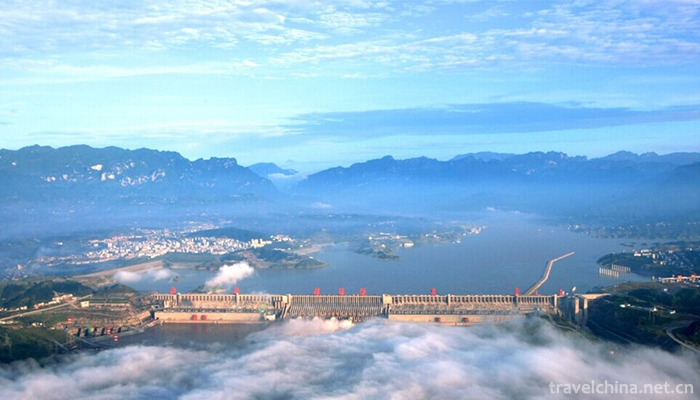
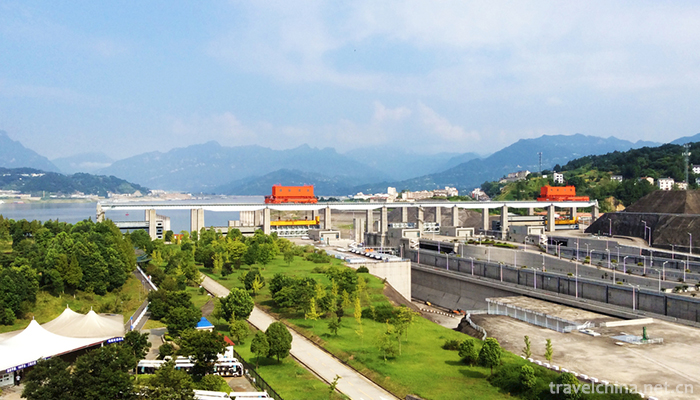
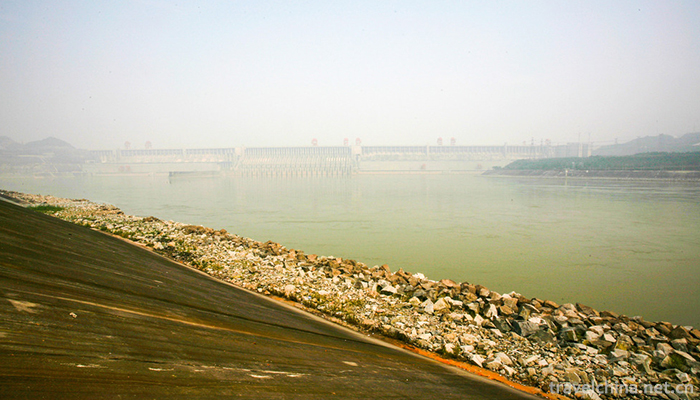
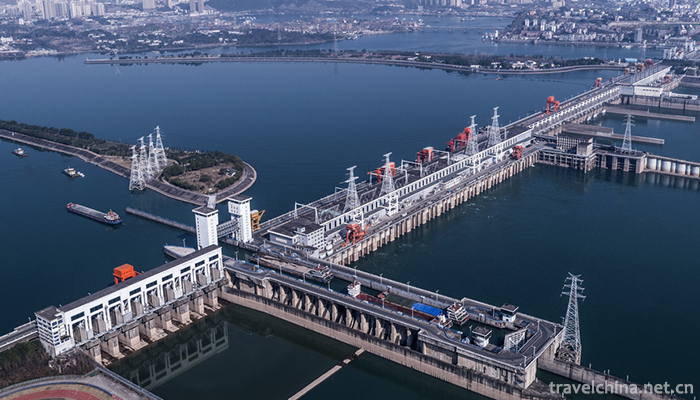
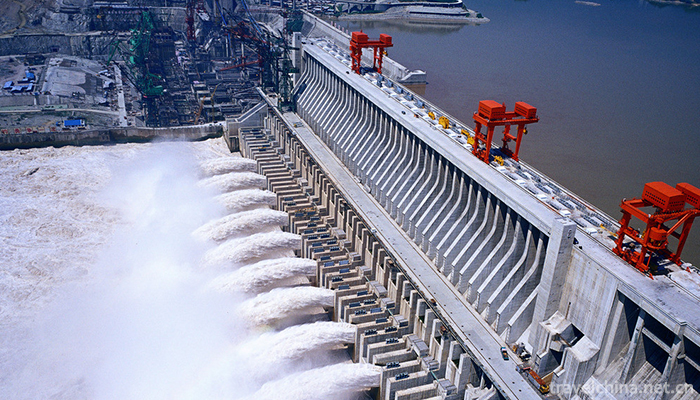
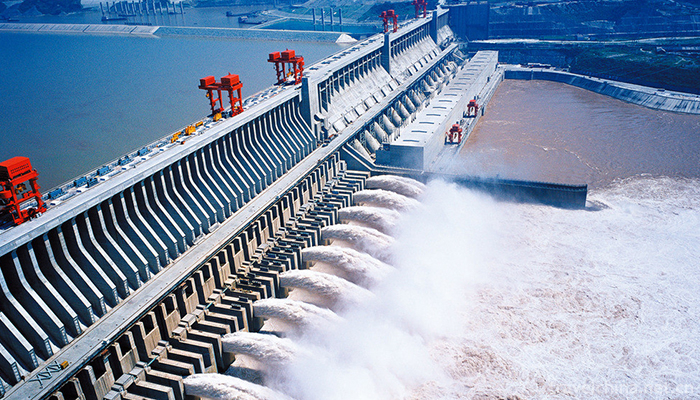
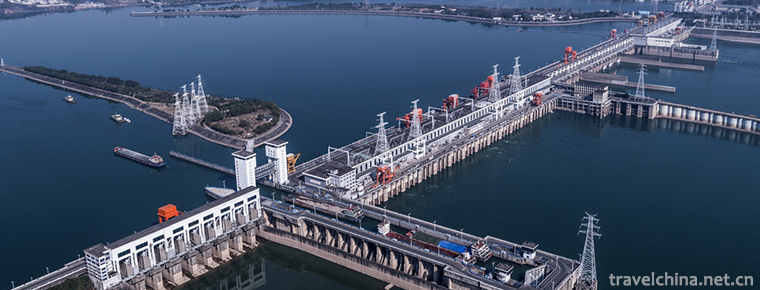
-
1.Ning Xia Night Market
Ningxia Night Market is one of the few night markets in Taipei ...
Time 2018-10-12 -
2.Yeliguan Scenic Area
Yeliguan Scenic Area is located in Lintan County, with Yeliguan of Lintan County as the center. It is divided into four scenic areas: Lianhuashan, Xixia, Dongxia and Yehai Lake.
Time 2018-12-26 -
3.La blun Temple
Labrang Temple is one of the six main monasteries of the Gelug Sect of Tibetan Buddhism. In 1982, Labrang Temple was listed as one of the key cultural relics protection units in China
Time 2019-01-29 -
4.Iron Coal Steam Locomotive Museum
Tiaobingshan Steam Locomotive Museum, formerly known as Iron Coal Steam Locomotive Museum. National AAAA-level scenic spots and national industrial tourism demonstration sites
Time 2019-02-22 -
5.Changsha window of the world
Changsha World Window is located on the Liuyang River in the northeastern suburb of Changsha City, Hunan Province. It is a cultural theme park jointly invested by Hunan Radio and Television Media Co.,
Time 2019-03-17 -
6.Zhoucun Ancient Mall
Zhoucun Ancient Mall, also known as Street, is located in Zhoucun District, Zibo City, Shandong Province. The main road of Shandong Province, Jiqing Expressway
Time 2019-03-20 -
7.Guizhou opera
Guizhou Opera is one of the local operas popular in Guizhou Province. It evolved and developed from the opera Yangqin (also known as "Wenqin", "Guizhou Playing Ci")
Time 2019-06-10 -
8.Wudu Alpine Opera
Wudu Alpine Opera, also known as Alpine Opera, is one of the two unique local operas in Gansu Province. In 2008, Wudu Alpine Opera was selected as the second batch of national intangible cultural heri
Time 2019-06-30 -
9.Changsha Tanci
Changsha Tanci is a traditional opera in Hunan Province. It is popular in Changsha, Yiyang, Xiangtan, Zhuzhou and Liuyang of Hunan Xiangjiang River and Zishui River basin. Changsha Tanci derives from
Time 2019-07-25 -
10.Scrambled eggs with green peppers
Fried eggs with green peppers is a family dish. The main ingredients are eggs and green peppers. The auxiliary ingredients are lard, salt, vinegar, onion, etc. the main cooking technology is fried, ye
Time 2020-04-10 -
11.Public education in Chengdu Giant Panda Base
From 2003 to 2016, Chengdu base received more than 100000 primary and secondary school students at home and abroad, and trained more than 800 volunteers; went to colleges and universities, communities, primary and secondary schools, kindergartens and nature
Time 2020-12-13 -
12.Leshan secondary industry
In 2019, the industrial added value of Leshan City is 68.028 billion yuan, an increase of 8.8% over the previous year, accounting for 36.5% of the city's GDP, driving economic growth by 4.0 percentage points and contributing 52.8% to economic growth.
Time 2020-12-17